Ettore Sottsass Jr. Follow Unique totem, no. 18 1966 Glazed earthenware, painted oak. 234.5 cm (92 3/8 in.) high Produced by Bitossi, Montelupo Fiorentino, for the exhibition ‘Menhir, Ziggurat, Stupas, Hydrants & Gas Pumps’, April 1967, Galleria Sperone, Milan, Italy. Comprised of seven cylinders and two discs. Interior of each incised 6 I . Five cylinders with label printed, ettore sottsass 1966/ CERAMIC/PIECE/to mount from/below starting/with piece no. 1 , and each signed 10/1-5 respectively. Base marked SOTTSASS 66 and label printed 18 .
Provenance Sergio Cammilli, Florence Thence by descent Exhibited ‘Menhir, Ziggurat, Stupas, Hydrants & Gas Pumps’, Galleria Sperone, Milan, April 1967 Galleria La Bertesca, Genoa, June 1967 'Ceramiche Sbagliate', Poltronova showroom, Agliana, September 1967 Literature Tommaso Trini, 'Ceramiche 67', Domus , no. 455, October 1967, p. 30 for a similar example Barabara Radice, Ettore Sottsass A Critical Biography , London, 1993, p. 51 Par Milco Carboni, Ettore Sottsass Jr. ’60-’70 , exh. cat., FRAC Centre, Orléans, 2006, p. 104 for a drawing of the present model Catalogue Essay The ‘Torri’, designed by Sottsass between 1964-1965, constituted an anomaly within the history of the architect’s ceramic oeuvre: their large scale, their polychrome appearance, and their placement on a white plinth were each unprecedented elements within his work. Sottsass explained that he designed the totems to be a monumental translation of the series of pills he was administered daily during his stay at an American hospital where he was admitted in 1962 with a near fatal Nephritis. The devastating illness, however, brought forth some wonderful atonement. From his hospital bed Sottsass dreamt up some of the most important projects of his career: the ‘Ceramiche delle Tenebre’, the ‘Ceramiche di Shiva’ and the exhibition ‘Menhir, Ziggurat, Stupas, Hydrants & Gas Pumps’, as well as the creation of the magazine ‘Room East 128. Chronicle’, introduced the same year. In the first issue of ‘Room East 128’, Sottsass referred to himself as ‘King of a Cortisone’, publishing sketches in which he vertically stacked the brightly coloured pills that he had to swallow each day (Cortisone, Phenobarbital, Librium, Potassium Chloride etc.), suspending them over a glass and titling the drawing ‘TOTEM, detto PALO ALTO’. Upon his return to Milan, healed and grateful, he translated the drawing of those pills to large stackable cylinders, turned on the wheel, white or hand painted with bright colours reminiscent of road signs. Later on he would write: ‘I have made mountains of clay, impossible to realise, impossible to move, to assemble, to use and pay for’. Is this not a wonderful definition of the artist’s work? Fulvio Ferrari The present totem features a painted wooden base with seven cylinders and two discs in earthenware, thrown and turned with coloured glazes against a white background. The work consists of four stackable parts, as some of the elements have been fused together during the manufacturing process: a mechanism known as ‘ incastro a battente ’ united the justaposed cylinders following their glazing and second firing. The structure was subsequently further strengthened by an internal metal pole. This totem belongs to the series of ‘big coloured columns, more than two meters tall’, which Sottsass conceived between 1964 and 1966 (E. Sottsass, Scritto di notte , Milan, 2017, p. 233). The work was manufactured by Bitossi & Sons under the expert supervision of the company’s artistic director Aldo Londi Sottass’ designs were delivered to Londi by his young apprentice Clinio Trini Castelli, who after the process of throwing, turning, and biscuit firing, personally took part in the glazing and definition of its graphic patterns. The study of the ever changing meaning and the dimensions of an object was a focal point for Sottsass; a few examples that come to mind are ‘things in the gardens and totem’ designed in 1965 and the stratified ceramics produced from 1961‐1962 (S. Riva, Ettore Sottsass Catalogo ragionato dell’archivio 1922‐1978 , Milan, 2017, p. 277). Sottsass’ large ceramics works, which he considered to be ‘deliberately and irremediably wrong’, and not meant to be sold and used, were displayed in the exhibition ‘Menhir, Ziggurat, Stupas, Hydrants & Gas Pumps’ at Galleria Sperone, Milan in April 1967. The works were exhibited later that year in June at La Bertesca Gallery, Genoa, and then in September at Poltronova’s showroom in Adigliana with the title ‘Wro
Ettore Sottsass Jr. Follow Unique totem, no. 18 1966 Glazed earthenware, painted oak. 234.5 cm (92 3/8 in.) high Produced by Bitossi, Montelupo Fiorentino, for the exhibition ‘Menhir, Ziggurat, Stupas, Hydrants & Gas Pumps’, April 1967, Galleria Sperone, Milan, Italy. Comprised of seven cylinders and two discs. Interior of each incised 6 I . Five cylinders with label printed, ettore sottsass 1966/ CERAMIC/PIECE/to mount from/below starting/with piece no. 1 , and each signed 10/1-5 respectively. Base marked SOTTSASS 66 and label printed 18 .
Provenance Sergio Cammilli, Florence Thence by descent Exhibited ‘Menhir, Ziggurat, Stupas, Hydrants & Gas Pumps’, Galleria Sperone, Milan, April 1967 Galleria La Bertesca, Genoa, June 1967 'Ceramiche Sbagliate', Poltronova showroom, Agliana, September 1967 Literature Tommaso Trini, 'Ceramiche 67', Domus , no. 455, October 1967, p. 30 for a similar example Barabara Radice, Ettore Sottsass A Critical Biography , London, 1993, p. 51 Par Milco Carboni, Ettore Sottsass Jr. ’60-’70 , exh. cat., FRAC Centre, Orléans, 2006, p. 104 for a drawing of the present model Catalogue Essay The ‘Torri’, designed by Sottsass between 1964-1965, constituted an anomaly within the history of the architect’s ceramic oeuvre: their large scale, their polychrome appearance, and their placement on a white plinth were each unprecedented elements within his work. Sottsass explained that he designed the totems to be a monumental translation of the series of pills he was administered daily during his stay at an American hospital where he was admitted in 1962 with a near fatal Nephritis. The devastating illness, however, brought forth some wonderful atonement. From his hospital bed Sottsass dreamt up some of the most important projects of his career: the ‘Ceramiche delle Tenebre’, the ‘Ceramiche di Shiva’ and the exhibition ‘Menhir, Ziggurat, Stupas, Hydrants & Gas Pumps’, as well as the creation of the magazine ‘Room East 128. Chronicle’, introduced the same year. In the first issue of ‘Room East 128’, Sottsass referred to himself as ‘King of a Cortisone’, publishing sketches in which he vertically stacked the brightly coloured pills that he had to swallow each day (Cortisone, Phenobarbital, Librium, Potassium Chloride etc.), suspending them over a glass and titling the drawing ‘TOTEM, detto PALO ALTO’. Upon his return to Milan, healed and grateful, he translated the drawing of those pills to large stackable cylinders, turned on the wheel, white or hand painted with bright colours reminiscent of road signs. Later on he would write: ‘I have made mountains of clay, impossible to realise, impossible to move, to assemble, to use and pay for’. Is this not a wonderful definition of the artist’s work? Fulvio Ferrari The present totem features a painted wooden base with seven cylinders and two discs in earthenware, thrown and turned with coloured glazes against a white background. The work consists of four stackable parts, as some of the elements have been fused together during the manufacturing process: a mechanism known as ‘ incastro a battente ’ united the justaposed cylinders following their glazing and second firing. The structure was subsequently further strengthened by an internal metal pole. This totem belongs to the series of ‘big coloured columns, more than two meters tall’, which Sottsass conceived between 1964 and 1966 (E. Sottsass, Scritto di notte , Milan, 2017, p. 233). The work was manufactured by Bitossi & Sons under the expert supervision of the company’s artistic director Aldo Londi Sottass’ designs were delivered to Londi by his young apprentice Clinio Trini Castelli, who after the process of throwing, turning, and biscuit firing, personally took part in the glazing and definition of its graphic patterns. The study of the ever changing meaning and the dimensions of an object was a focal point for Sottsass; a few examples that come to mind are ‘things in the gardens and totem’ designed in 1965 and the stratified ceramics produced from 1961‐1962 (S. Riva, Ettore Sottsass Catalogo ragionato dell’archivio 1922‐1978 , Milan, 2017, p. 277). Sottsass’ large ceramics works, which he considered to be ‘deliberately and irremediably wrong’, and not meant to be sold and used, were displayed in the exhibition ‘Menhir, Ziggurat, Stupas, Hydrants & Gas Pumps’ at Galleria Sperone, Milan in April 1967. The works were exhibited later that year in June at La Bertesca Gallery, Genoa, and then in September at Poltronova’s showroom in Adigliana with the title ‘Wro
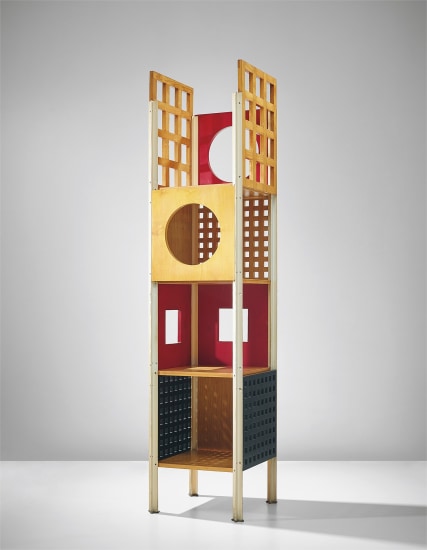


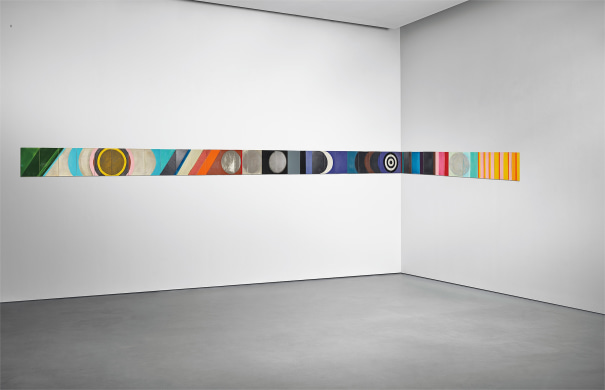



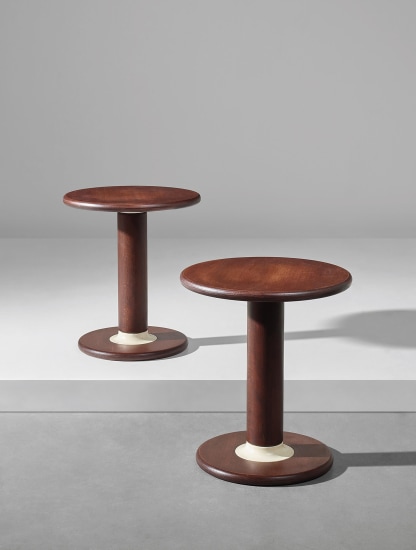
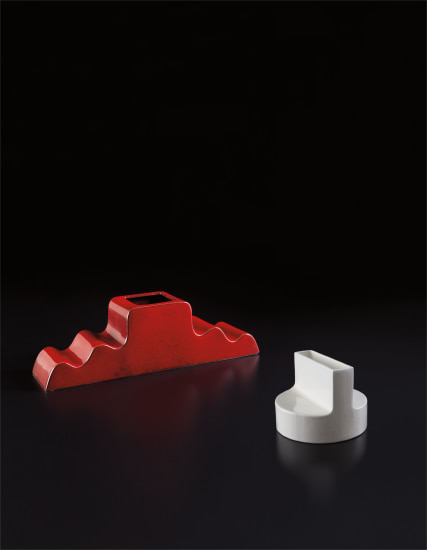
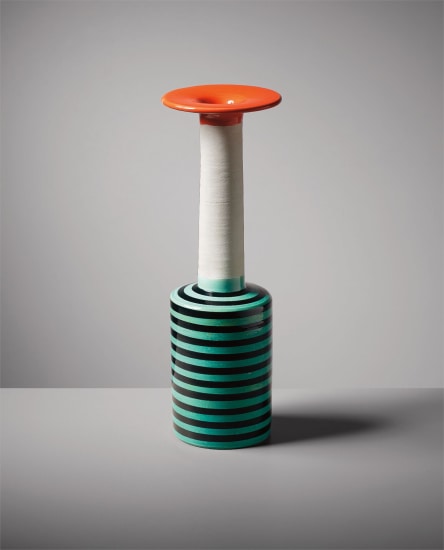
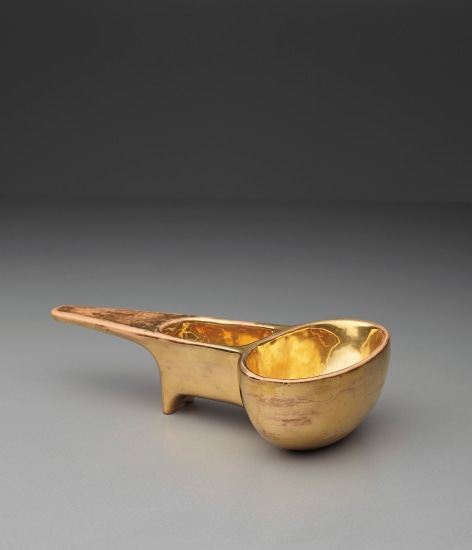
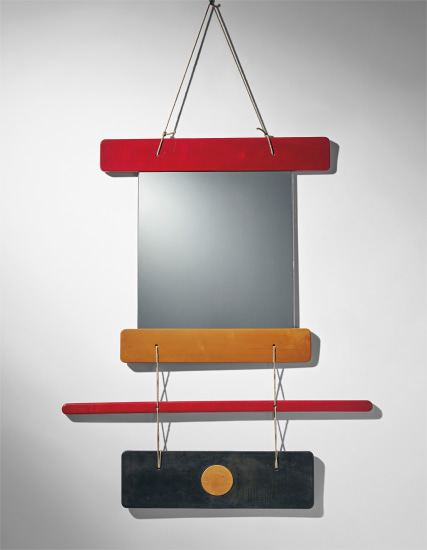

Testen Sie LotSearch und seine Premium-Features 7 Tage - ohne Kosten!
Lassen Sie sich automatisch über neue Objekte in kommenden Auktionen benachrichtigen.
Suchauftrag anlegen